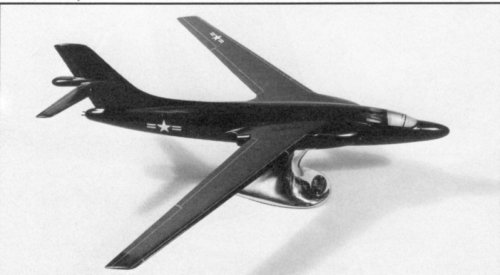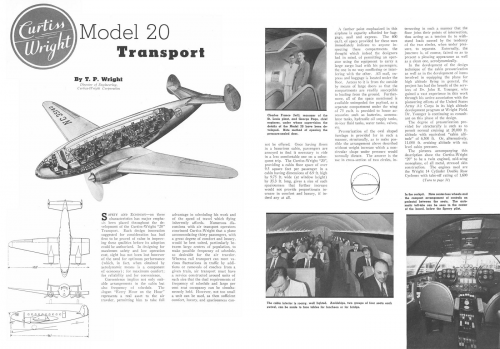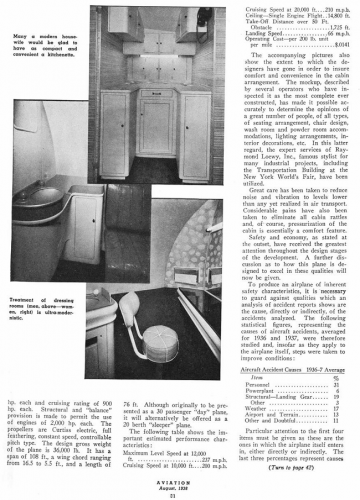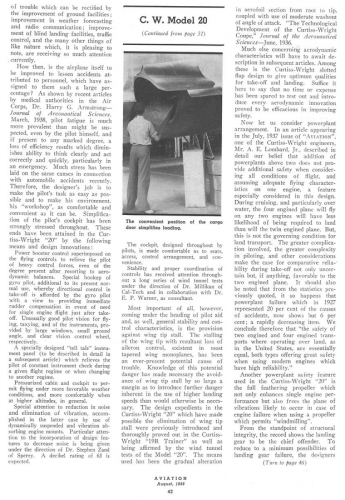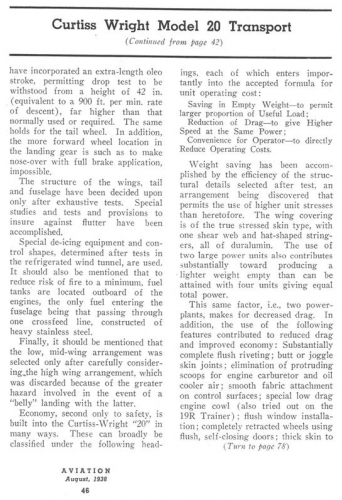Jos Heyman
ACCESS: Top Secret
- Joined
- 15 February 2007
- Messages
- 597
- Reaction score
- 68
Here is what I got for Curtiss Wright designs:
Curtiss CW-1: Introduced in 1931 this light aircraft came with a wide range of engine options. 270 were built.
Curtiss CW-2: Sport trainer. One was built.
Curtiss CW-3 Duckling: Flying boat based on the CW-1. Introduced in 1931 three were built. The project was shelved because of lack of funds.
Curtiss CW-4 Condor: Transport. Also built for USAF and C-30 and US Navy as R4C.
Curtiss CW-5 Junior Transport: One was built.
Curtiss CW-6 Sedan: Introduced in 1930. Four were built.
Curtiss CW-12: Single engined. At least 41 were built.
Curtiss CW-14: 1931 design.
Curtiss CW-15 Club Sedan: Light aircraft introduced in 1931. 19 were built.
Curtiss CW-16: Sport aircraft introduced in 1932. A total of 23 were built.
Curtiss CW-19: Development began in 1935 as a sports aircraft that was considered too hot for the civil market. One was built and it served as a prototype for the CW-21, CW-22, CW-23 and CW-33.
As CW-19R about 25 were built as military version for export to China, Cuba, and South American countries, as well as 3 civil models as -A-19R. Of the latter, the second was rebuilt as a civil CW-22.
Curtiss CW-20 Commando: Twin engined transport. USAAF's C-46 and US Navy's R5C.
Curtiss CW-21 Demon: Developed from the CW-19 design it was built for China (4) and the Netherlands East Indies (22 as CW-21B). 32 were to be built from components by Chinese Aircraft Mfg Co at Loiwing, but were cancelled before any production was begun.
Curtiss CW-22 Falcon: Based on CW-19 but with retracting gear. Delivered to China (35), Netherlands East Indies (20), Turkey (50) as well as USN as SNC-1.
Curtiss CW-23: Development from CW-19 as a trainer for USAAF. One was built in 1938.
Curtiss CW-24: XP-55 fighter.
Curtiss CW-25 Fledgling: AT-9 twin engined trainer
Curtiss Wright CW-28: CW-20 Commando with nose gear. Not built.
Curtiss CW-29 Nighthawk: Originally ordered as XA-43, then became XP-87 and later XF-87. One built.
Curtiss Wright CW-32: High winged transport. The 1946 design was not built.
Curtiss CW-33: Development of CW-19 which was not built.
Jos heyman
Curtiss CW-1: Introduced in 1931 this light aircraft came with a wide range of engine options. 270 were built.
Curtiss CW-2: Sport trainer. One was built.
Curtiss CW-3 Duckling: Flying boat based on the CW-1. Introduced in 1931 three were built. The project was shelved because of lack of funds.
Curtiss CW-4 Condor: Transport. Also built for USAF and C-30 and US Navy as R4C.
Curtiss CW-5 Junior Transport: One was built.
Curtiss CW-6 Sedan: Introduced in 1930. Four were built.
Curtiss CW-12: Single engined. At least 41 were built.
Curtiss CW-14: 1931 design.
Curtiss CW-15 Club Sedan: Light aircraft introduced in 1931. 19 were built.
Curtiss CW-16: Sport aircraft introduced in 1932. A total of 23 were built.
Curtiss CW-19: Development began in 1935 as a sports aircraft that was considered too hot for the civil market. One was built and it served as a prototype for the CW-21, CW-22, CW-23 and CW-33.
As CW-19R about 25 were built as military version for export to China, Cuba, and South American countries, as well as 3 civil models as -A-19R. Of the latter, the second was rebuilt as a civil CW-22.
Curtiss CW-20 Commando: Twin engined transport. USAAF's C-46 and US Navy's R5C.
Curtiss CW-21 Demon: Developed from the CW-19 design it was built for China (4) and the Netherlands East Indies (22 as CW-21B). 32 were to be built from components by Chinese Aircraft Mfg Co at Loiwing, but were cancelled before any production was begun.
Curtiss CW-22 Falcon: Based on CW-19 but with retracting gear. Delivered to China (35), Netherlands East Indies (20), Turkey (50) as well as USN as SNC-1.
Curtiss CW-23: Development from CW-19 as a trainer for USAAF. One was built in 1938.
Curtiss CW-24: XP-55 fighter.
Curtiss CW-25 Fledgling: AT-9 twin engined trainer
Curtiss Wright CW-28: CW-20 Commando with nose gear. Not built.
Curtiss CW-29 Nighthawk: Originally ordered as XA-43, then became XP-87 and later XF-87. One built.
Curtiss Wright CW-32: High winged transport. The 1946 design was not built.
Curtiss CW-33: Development of CW-19 which was not built.
Jos heyman

